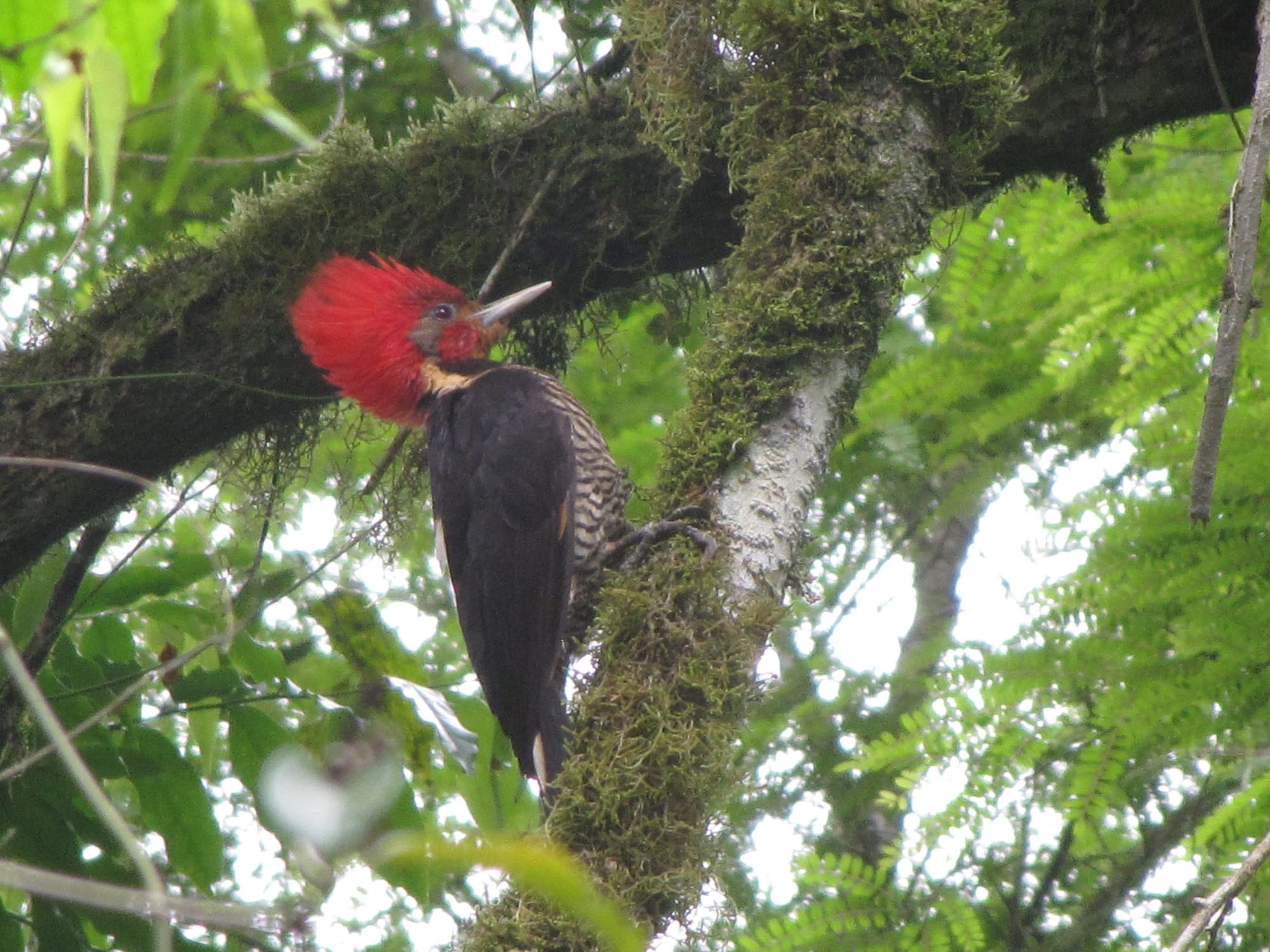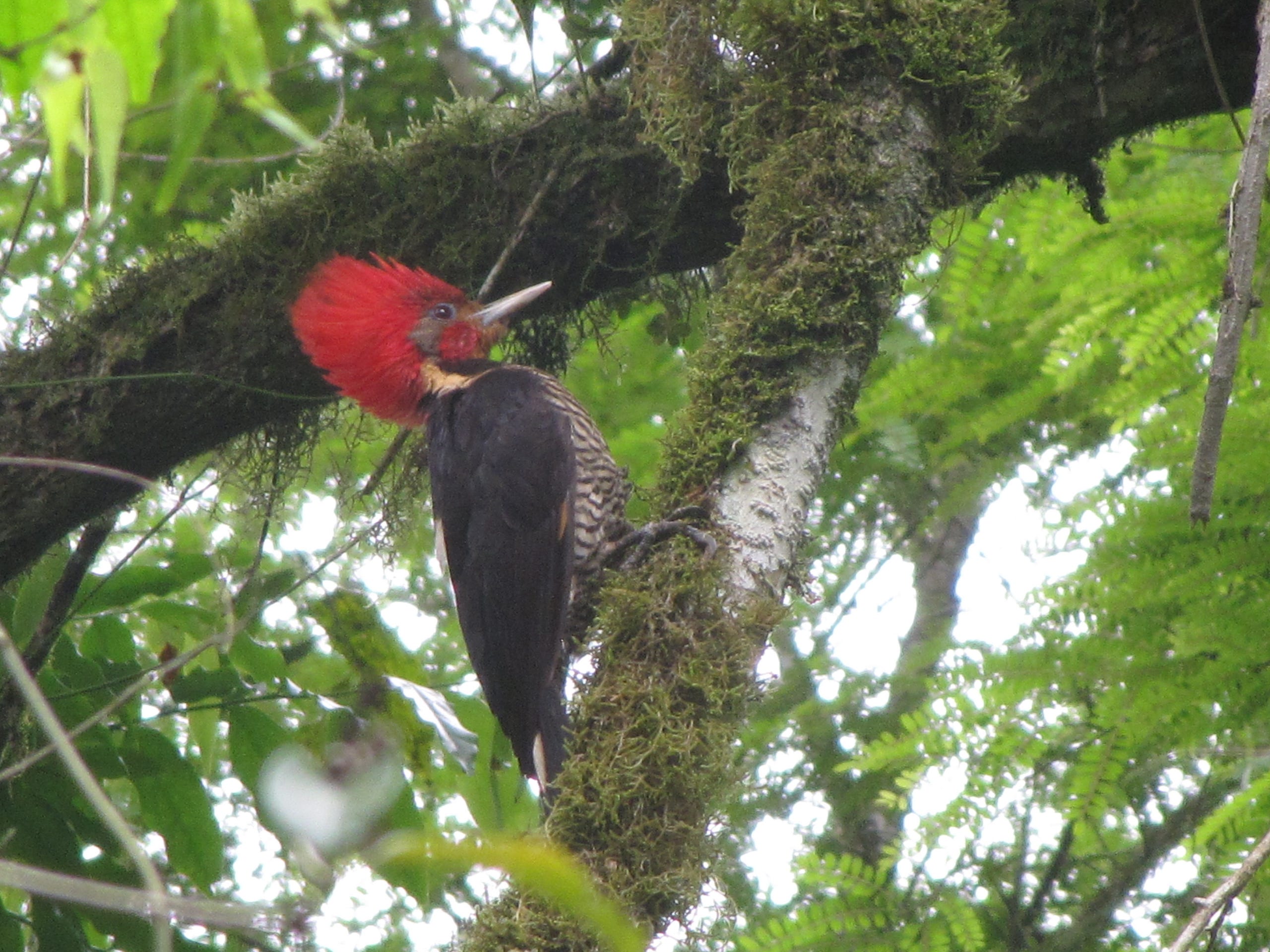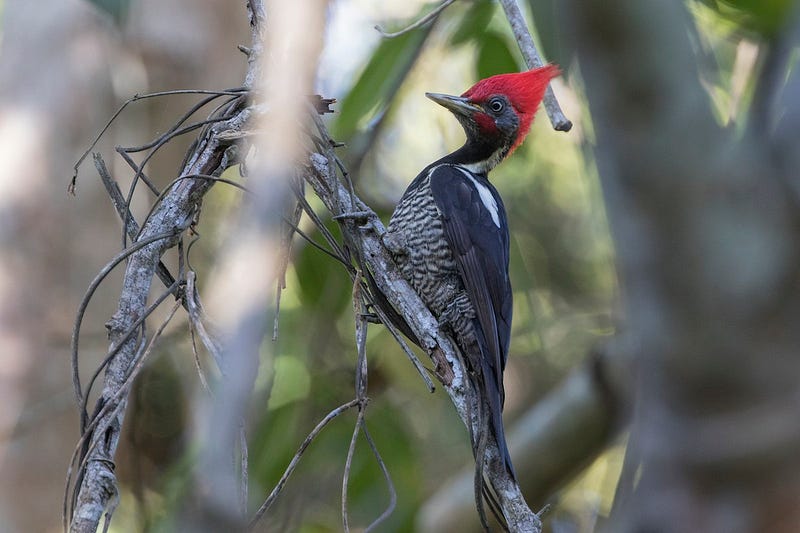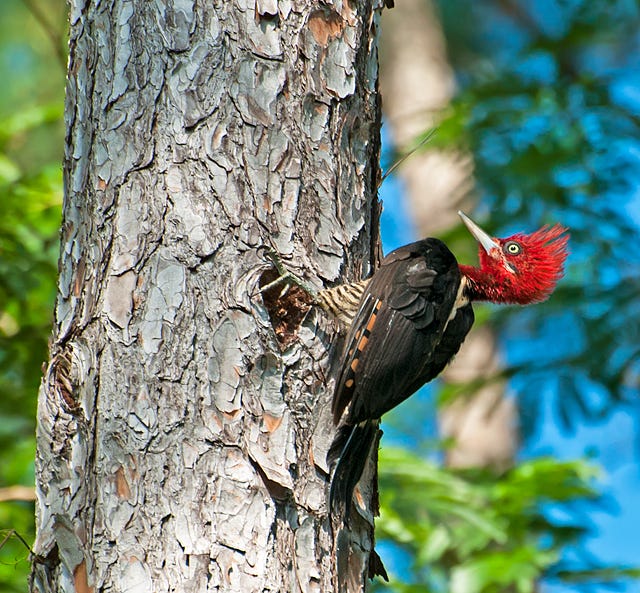
Blending in With Similar Species of Crested Woodpeckers

Welcome back for another nature story on mimicry. Our first two stories for this season involved mimics which imitated models with some form of chemical defense mechanism (coral snake venom and bee and wasp venom). This is a common form of defensive mimicry, as chemical defenses can be quite potent. However, mimic species can take advantage of anything that might make a model unappealing to attack.
The helmeted woodpecker, Celeus galeatus, above is found in the relatively small geographic coastal area of southeastern Brazil and inland through Argentina and into Paraguay. It lives in montane forests and is not commonly seen. It is listed as Vulnerable because of deforestation and habitat loss. Its distribution overlaps with two other similar-looking woodpeckers. The lineated woodpecker, Dryocopus lineatus, can be found throughout much of tropical and subtropical America, from Mexico to southern Brazil. It also bears a striking resemblance to a close relative, with whose territory it does not overlap. For those who live in the eastern United States and Canada, you may be familiar with it: the pileated woodpecker, Dryocopus pileatus. I featured its distinctive call in a story from Season 1: Listening to Nature.

The robust woodpecker, Campephilus robustus, has a much smaller range, overlapping with the helmeted woodpecker and then extending farther into southeastern Brazil. Its genus includes the largest woodpecker in the United States (and one of the largest in the world), the likely extinct ivory-billed woodpecker, Campephilus principalis.

With their similar appearance, it is understandable why naturalists initially believed these species to be closely related to one another. In fact, the helmeted woodpecker was at one point considered part of the Dryocopus genus. However, further study and access to DNA sequencing affirmed that these woodpeckers are not close relatives at all. Instead, the helmeted woodpecker is another example of mimicry.
You may be asking, ‘What is there to be gained for the helmeted woodpecker in mimicking those two other species?’ ‘What do they have worth imitating?’ Those are excellent questions, not readily apparent simply by looking at the three species. They are all mainly insectivores living in forested areas. What do the lineated and robust woodpeckers have that the helmeted woodpecker doesn’t?
The answer is size. Large size is just as valid and widespread a survival strategy as chemical defenses. The larger an individual is, the more energy is required for a predator to kill and eat it. Larger prey are also much more likely to severely wound a predator. Even a crippling blow is potentially lethal if it prevents the predator from catching or consuming prey going forward. It is not in the best interests of a predator to get into a fight if it can avoid it. Predators will use speed, stealth and venom to get around this and may avoid an attempt altogether if the prey is too big.
Celeus galeatus is a medium-sized woodpecker, approximately 27–28 cm in length. This is about the size of an average blue jay, Cyanocitta cristata, a good size for predators of birds. Both model species are larger. The lineated woodpecker is 31.5–36 cm long and the robust woodpecker is 32–37 cm long, about the size of a large pigeon, Columba livia. A difference of 5–10 cm does not seem like much, but it can be enough to make a predator think twice about attacking. Any decrease in predator attacks because of similar plumage to larger species would have increased survival in those helmeted woodpeckers. Thus, as time went on, the better mimics would survive and pass on those genes and the appearance of the species would shift towards that of the models.
As with the last two defensive mimicry stories, imagine yourself in the eyes of a predator. You have previously sustained an injury in an attempted attack on a medium-to-large-sized woodpecker with a large red crest, black back, and barred underside. How well do you think you would be able to tell the difference between the larger species and the slightly smaller one, especially at a distance? What are the upsides and downsides? You’re likely to get injured again if you attack the wrong one. Better not to take the chance.
If you like my stories, please like, subscribe, and share them. If you have an idea for a topic for a future season, let me know and if I use it, I’ll give you a shout out in my introductory post.